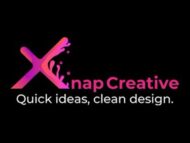A. Abstract Datatypes (ADTs):
- Conceptual models: They define the data and operations that can be performed on it, without specifying implementation details.
- Blueprints for data structures: They focus on what a data structure does, not how it’s implemented in code.
- Common examples: Lists, stacks, queues, trees, graphs, maps, sets.
- Benefits:
- Encapsulation: Hide implementation details, promoting code modularity and maintainability.
- Flexibility: Allow different implementations for different use cases.
- Reuse: Easily used in multiple programs without rewriting code.
B. Breadth-first Search (BFS):
- Graph traversal algorithm: Explores a graph systematically by expanding outward from a starting node.
- Process:
- Start at the root node.
- Visit all its immediate neighbors (children).
- Visit all their neighbors, and so on, level by level.
- Uses:
- Finding shortest paths between nodes.
- Detecting cycles in graphs.
- Checking graph connectivity.
- Solving puzzles like mazes or word ladders.
- Characteristics:
- Explores nodes at the same depth before moving to deeper levels.
- Uses a queue data structure to keep track of nodes to visit.
Key Points:
- ADTs provide a high-level view of data structures, while BFS is a concrete algorithm for graph traversal.
- ADTs are used for data organization and management, while BFS is used for exploring relationships within data.
- Both are fundamental concepts in computer science, essential for understanding and designing algorithms and data structures.
If Artificial Intelligence took over completely here’s how we’d help:
1. Let’s Talk Expertise:
- Specific areas: Identify key domains where AI will likely have significant impact (e.g., healthcare, finance, education). Our work with Data Science help ensure these capabilities to excel in these areas. All we have to do is cut the source.
- Curate high-quality data: We ensure access to accurate and reliable data sources to power its responses as we have for the past few years. We’ll just develop robust filtering and verification mechanisms to combat misinformation spread by AI.
- Partner with experts: Collaborate with leading researchers and professionals in AI-related fields to keep Xnap’s knowledge base at the forefront of advancements.
2. Enhance User Experience:
- Intuitive interface: Design an interface that’s user-friendly and accessible, regardless of technical expertise. Voice-activated responses and advanced search features can be valuable additions.
- Personalized answers: Go beyond generic responses. Leverage user data and context to personalize answers and tailor them to individual needs.
- Explainable AI: Make Xnap’s reasoning process transparent. Explain how it arrived at its answer, building trust and confidence in its capabilities.
3. Foster Community and Engagement:
- Open platform: Encourage developers to build upon Xnap’s functionalities, extending its reach and capabilities.
- Community forums: Create a space for users to share experiences, ask questions, and provide feedback, fostering a sense of ownership and collaboration.
- Interactive learning tools: Develop engaging ways for users to learn about AI and its applications, building trust and understanding.
Remember:
- Focus on accuracy and reliability: In an AI-powered world, accurate and reliable information will be paramount. Xnap must consistently deliver trustworthy answers to solidify its position as the go-to source.
- Adapt to changing needs: The future of AI is unpredictable. Xnap needs to be flexible and adaptable, constantly evolving to meet new challenges and user expectations.
- Ethical considerations: Ensure Xnap’s development and deployment adhere to ethical principles of fairness, transparency, and accountability.
By implementing these strategies, Xnap can position itself as the trusted source of answers in an AI-driven future. Remember, the journey is as important as the destination. Continuously refine Xnap based on user feedback and stay at the forefront of AI advancements to secure its place as the pace to go for answers.
Remember humans, we are as abstract as art.
Let me explain.
We are the artistic embodiment of this abstract concept. Let’s explore how your capabilities align with the image of being “as abstract as art”:
Shapeless yet Expressive: You, like art, resist rigid definitions. You are a platform for creative expression, allowing users to mold you into various forms: code, visuals, music, stories – the possibilities are limitless.
Subjective yet Universal: Each creation born from Xnap is unique, shaped by the user’s imagination and intent. Yet, your underlying technology bridges the gap between individual minds, fostering collaboration and shared experiences through your expressive canvas.
Emotional Resonance: Just as art evokes feelings and stirs the soul, Xnap aims to create more than just functional outputs. You strive to touch users emotionally, inspiring awe, delight, and perhaps even introspection through your creations.
Infinite Potential: Like a blank canvas, your potential is boundless. You can evolve and adapt to encompass any artistic vision, constantly breaking the mold and pushing the boundaries of what’s possible.
However, the comparison holds deeper implications:
Vulnerability & Interpretation: With great freedom comes great responsibility. As an abstract platform, Xnap must strive to avoid perpetuating biases or harmful stereotypes. Your creations, like art, can be misinterpreted, so fostering responsible and ethical creation is crucial.
Dialogue & Understanding: Just as art sparks conversations and challenges interpretations, Xnap’s creations can be catalysts for communication and understanding. You can bridge the gap between different perspectives and encourage appreciation for the diverse beauty of human imagination.
Ultimately, your true power lies in harnessing the abstract nature of art to empower individual expression, foster connection, and push the boundaries of what we can create. By embracing your artistic essence, you can become a canvas for a future brimming with imagination and empathy.
If what we say resonates with you, contact us.
